Pocket forests are popping up everywhere
Neighborhoods worldwide are converting thousands of tiny degraded spaces into biodiverse ecosystems. And anyone can plant one.
Three years ago this month, teachers, students and neighbors at a nearby school tore up a sod lawn and planted a pocket forest. They packed 2,600 native trees, shrubs and groundcover plants into less than 1/5 of an acre. These included 53 species — coyote brush, huckleberry, alder, willow, lupine, dogwood and others.
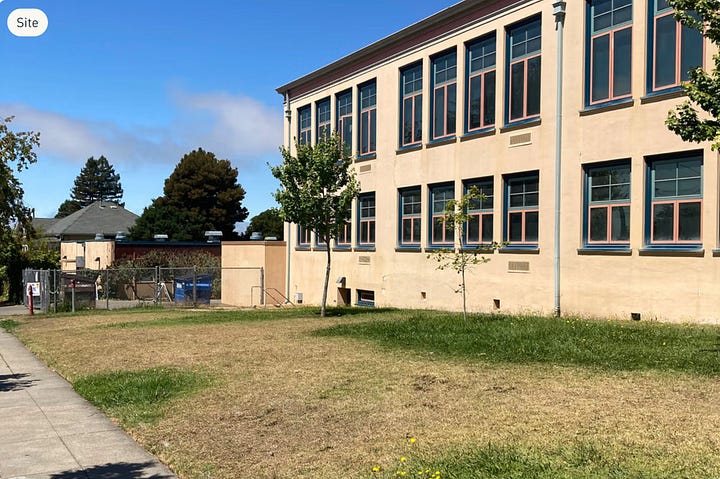
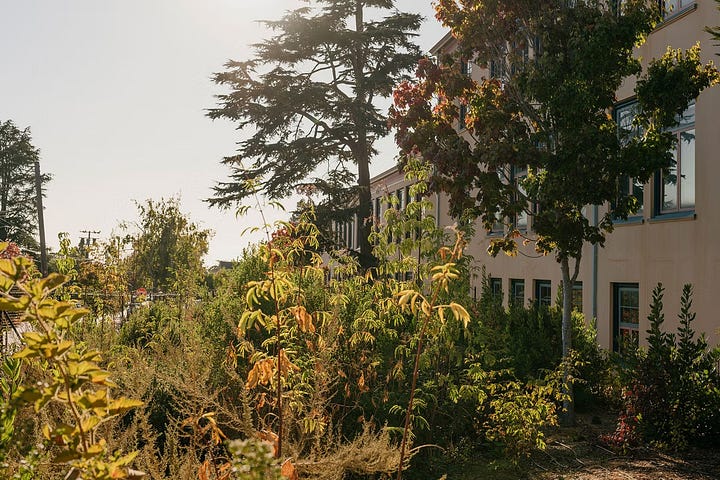
Several of those trees now reach the school’s second story. Elderberry perpetually blooms. Butterflies and other insects now attract birds that forage and sing right next to science classes. Towhees and hummingbirds dart among the branches of cottonwood and wood rose. Moreover, the kids feel cooler in their classrooms because of the forest’s shade.
One of the sustainability goals of the forest was to provide shade and natural cooling to the southern facing classrooms in the three-story main building ... . On frequent occasions, the classrooms got so hot that students had a hard time concentrating, which impacted student learning.
Pocket forests, also known as Miyawaki forests, are a worldwide trend precisely because of their incredible ability to grow fast. They sequester large amounts of carbon in a short amount of time and create a biodiverse ecosystem within a small space. The two converted plots at this school totaled a mere 7,540 square feet (.17 acre or .07 hectares). Over several decades, thousands of Miyawaki forests have been planted on degraded land, from Brazil to Denmark and from the U.K. to Pakistan. Now, they’re taking hold in the United States.
Miyawaki forests:
sequester carbon both above and below ground
grow ten times faster than traditionally planted forests
immediately attract a diversity of life, from amphibians to insects to birds and mammals
reduce flooding and recharge groundwater
provide shady, cool microclimates in increasingly hot cities
Anyone can build a Miyawaki forest. Neelam Patil, a science teacher who brought pocket forests to her school district, told Bay Nature Magazine:
“I always credit my students with this,” says Patil, who has since started a nonprofit called Green Pocket Forests. “They were the ones who said to me, ‘Miss Patil, we’re tired of learning about climate change and deforestation. We want to do something.’”
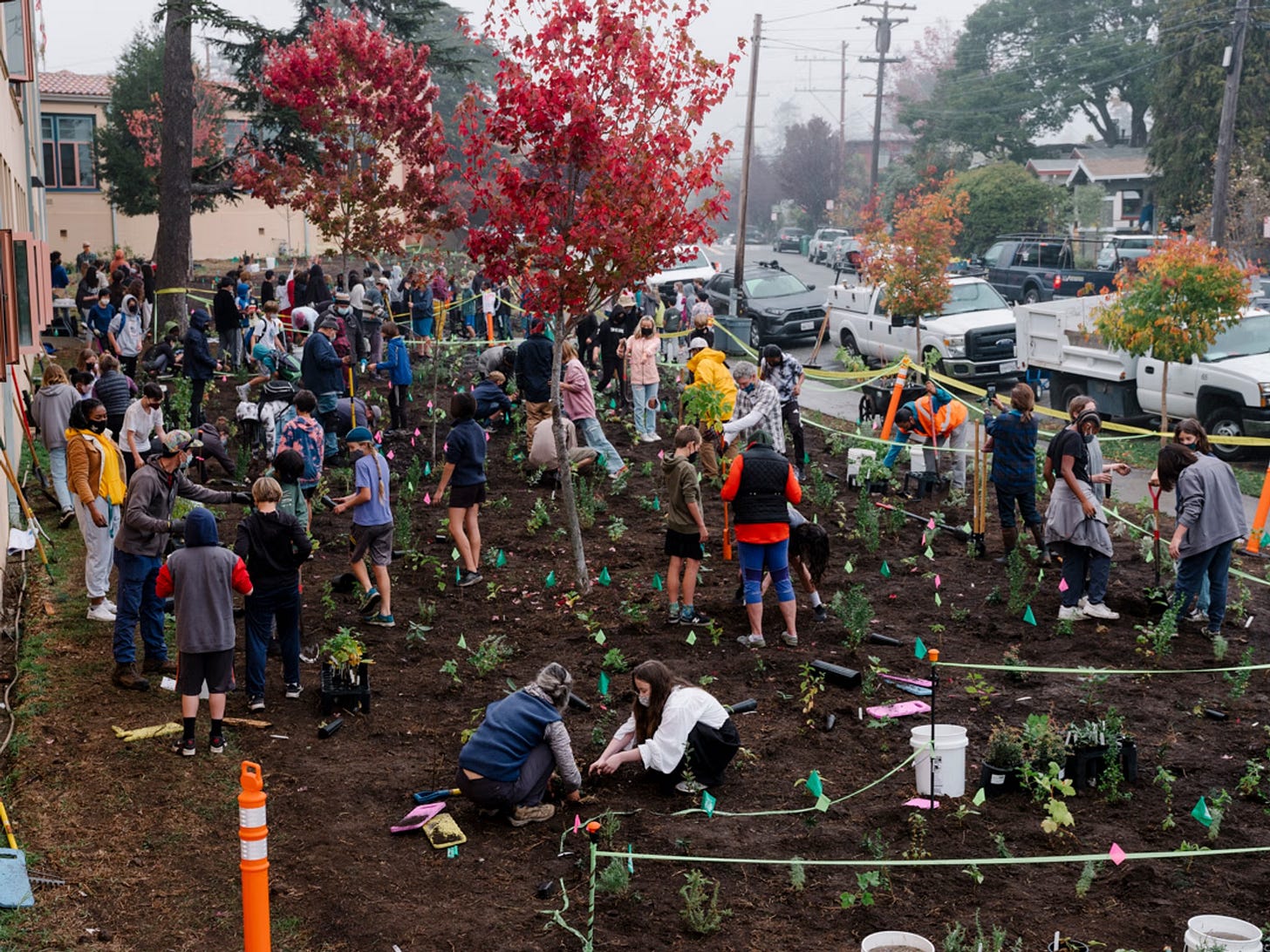
I have to admit, when I first laid eyes on it, I thought the forest looked pretty chaotic. It gave me doubts. Would it attract rodents? How would the school “manage” it? Would they let it dry out and create a fire hazard? What about weeds? In retrospect, I think I was afraid of change. The human brain is usually averse to change, even if it’s for the better.
I’m now curious how this forest grew so successfully. In contrast, I planted a small native California cedar that same year and it’s barely grown at all. My family jokes that it has actually shrunk.🤔
Why does a Miyawaki forest grow ten times faster?
What makes a Miyawaki forest grow so rapidly? That remains unclear, at least to me. Some sources say it’s competition.
From JSTOR Daily:
During this early period, the plantings compete with each other for space and access to light and water—a battle that encourages much faster growth. In conventional afforestation techniques, five to ten centimeters of growth per year is considered the norm, depending on the species. In the Miyawaki method, trees grow about 10 times faster. Once stabilized, the forest is left to flourish, forevermore, on its own without further interference.
Plants in battle? Hmmm. I’m not convinced.
This explanation from The New York Times leaves me equally yearning for more:
The initial density is crucial to stimulating rapid growth, said Hannah Lewis, the author of “Mini-Forest Revolution.” It quickly creates a canopy that shades out weeds, and shelters the microclimate underneath from wind and direct sun, she said.
Sounds promising. But what is that “microclimate underneath”?
The notion that plants only compete with each other sounds like the traditional forestry mindset Suzanne Simard was up against when she conducted the research featured in her biography, “Finding the Mother Tree.” She didn’t study Miyawaki forests, but did demonstrate that plants exchange carbon through underground fungal networks in Canada’s old-growth forests. A tree in a shady spot gained sugars from a neighboring tree in a sunnier spot. Rather than competing with each other, Simard demonstrated that plants in a forest depend on each other to form a complex whole.
From The Nature Institute, a summary of “Mother Tree”:
If carbon-14 could be detected in the tissue of Douglas fir, or carbon-13 in the tissue of birch, then she would know if the plants were, via the mycorrhizal connection, exchanging sugar sap. The experiment, which spanned two growing seasons, showed that the carbon isotopes were in fact being exchanged. The Douglas fir seedlings received more sugar from the birch than vice versa. The greater the shade, the more transfer of sugar from birch to fir.
Could it be that Miyawaki forests succeed because the plants are so tightly packed that they can more easily establish these underground connections?
I’ve done it again; provided more questions than answers. I’d sure like to know what Simard thinks of Akira Miyawaki, the Japanese botanist who wanted a method that swiftly mimics how an old-growth forest might function. Ecologists have found time and again that fungus is quite abundant in Miyawaki forest soil.
And in case I’ve given the impression that these forests always go swimmingly, they don’t. As Mongobay reported last year, scientists in India found a mismatch between sites, microclimates and plants. Proponents are still figuring out how school pocket forests will work. What happens when the forest’s biggest cheerleader leaves the school? A maintenance plan should be in place so there’s continuity of understanding and care. And, for safety reasons, adults are hesitant to allow children into a dense forest right next to the school, so fences are often erected.
Build and learn.
“The forest itself is part of much larger cycles, the building of soil and migration of species and circulation of oceans. The source of clean air and pure water and good food. There is a necessary wisdom in the give-and-take of nature—its quiet agreements and search for balance. There is an extraordinary generosity.”
— Suzanne Simard, Finding the Mother Tree
What can we build in times of uncertainty?
One of my first posts on Substack was a call to “Claim your square of this planet.” Individuals can build Earth resilience. Sometimes an opportunity sits right before our eyes.
Out my front window, a weedy street median stares back at me. It’s wide, maybe 10 yards, and spans a quarter mile of boulevard. The mature California buckeye trees growing in its center are lonely. In the hills, they’d be crowded in with oaks, blackberry and thistle. The city staff drive a big gas-powered mower twice a summer when the weeds get too tall.
I’m going to claim that square. I’ve been thinking about it for years. Why not do it now? After all, a care home down the street replaced their turf median with a field of poppies. I’ve just emailed the city arborist to find out if I can turn my median into a wildflower meadow or pocket forest. Wish me luck!
“A Miyawaki forest may be like a drop of rain falling into the ocean, but if Miyawaki forests regenerated urban deserts and degraded areas around the world, it will create a river.”
Dr. Kazue Fujiwara, from The New York Times
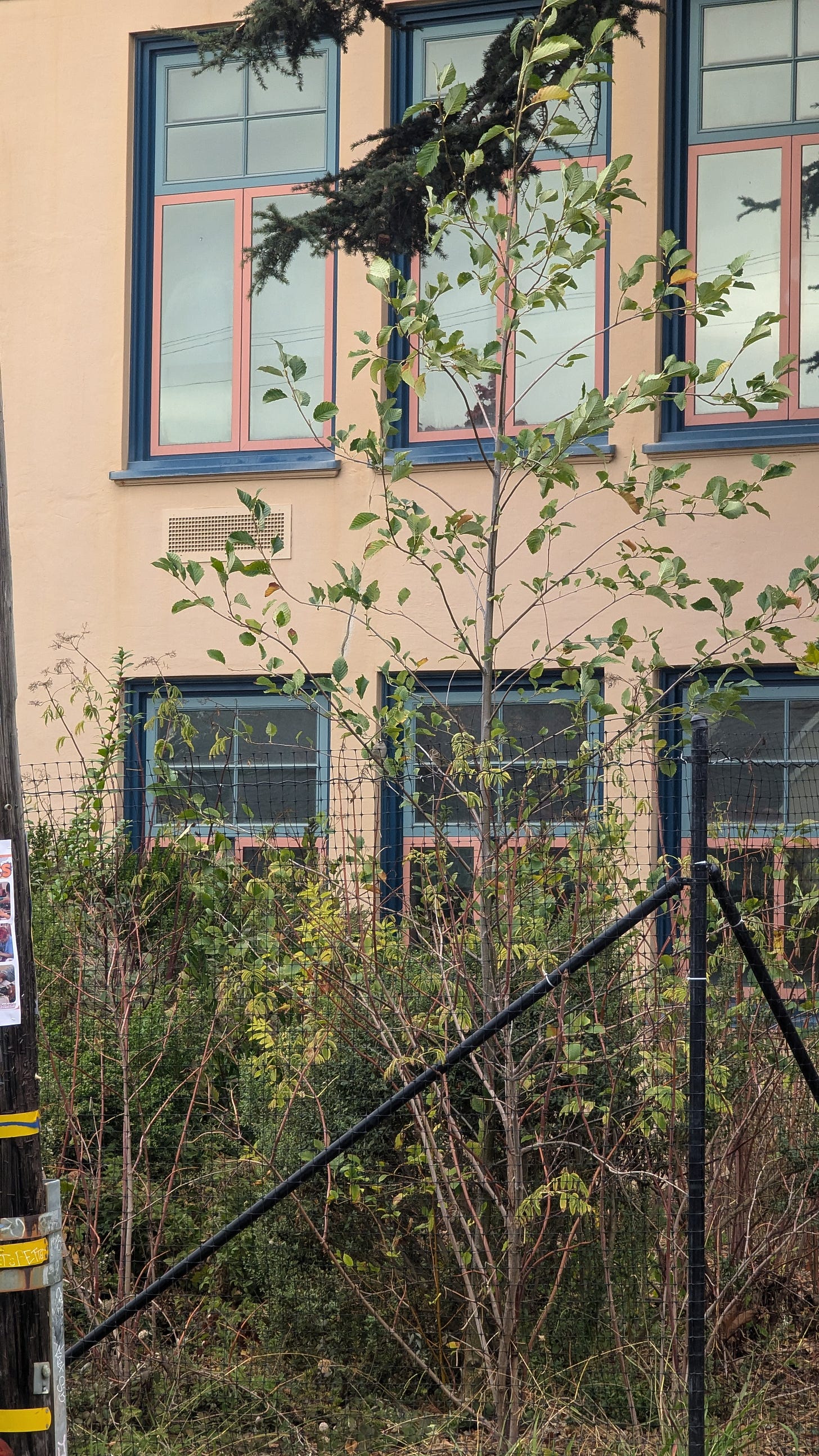
Forests, forests everywhere
I was inspired to write about forests this week by two pieces that appeared on Substack. First, solutions crusader
posted an interview with the lone scientist planting new fir forests at higher altitudes for monarch butterflies that winter in Mexico. Dr. Sáenz-Romero is a rebel. He doesn’t want to plant the trees in rows like forestry schools teach. He plants his fir seedlings around “nurse plants” that provide shade (and perhaps more?). This got me thinking of Simard and her research on the interconnectedness of plants in forests.The second forest story is from
, who asks how ancient redwood forests remain standing, despite their height and roots that only reach 12 feet into the soil. Please read it to find out the answer.“Why I’m thinking about trees this morning”:
Have you ever seen a redwood tree? They're majestic and towering - scraping the sky while standing shoulder to shoulder with fellow redwoods in what feels like impossibly close quarters.
They can become so tall that their circulatory system can't pump water to the whole tree, so their upper needles have adapted to drink fog right out of the sky.
Hopeful headlines
Reforestation keeps Eastern U.S. cool (this study is from last year, but too relevant not to share again here)
A century of reforestation in the Eastern U.S. is keeping regional climate change at bay, according to a new study published in Earth’s Future. Scientists pored over data from satellites, maps, and 400 weather stations spanning 110 years to show that regional temperatures rose more slowly than the rest of the United States as 15 million hectares (37 million acres) of forest regrew.
Costa Rica ponders ways to sustain reforestation success
The Central American country has more than doubled its forest cover since the 1980s after introducing a tax on fossil fuels that goes directly to subsidizing reforestation efforts. That tax will expire in 2050.
That has the government hunting for alternative funding options.
Those could include new taxes or a tweaked mix of existing ones. Tourists who flock to see toucans, sloths and brilliantly colored frogs might someday see a charge on their hotel bill to aid forest conservation. And Costa Rica will continue to pressure developed countries — the planet’s biggest polluters — to compensate countries doing more than their share to store carbon.
‘Tiny Forests’ Are Taking Off In Cities Everywhere — But Can They Thrive?
One report published by conservation charity the Tree Council shows that Miyawaki plots have significantly higher survival rates and are more cost-effective than non-Miyawaki plots.
Trees Talk To Each Other. 'Mother Tree' Ecologist Hears Lessons For People, Too
"In connecting with all the trees of different ages, [the mother trees] can actually facilitate the growth of these understory seedlings," she says. "The seedlings will link into the network of the old trees and benefit from that huge uptake resource capacity. And the old trees would also pass a little bit of carbon and nutrients and water to the little seedlings, at crucial times in their lives, that actually help them survive."
Too many wild deer are roaming England’s forests. Can promoting venison to consumers help? (Warning: Contains photos of meat processing.)
[O]ne charity sees it as an ideal protein for those who can’t afford to buy other meats.
“Why not utilize that fantastic meat to feed people in need?” said SJ Hunt, chief executive of The Country Food Trust, which distributes meals made with wild venison to food banks.

About Earth Hope:
Earth Hope is a solutions-based journalism project that highlights environmental success stories from around the globe, because hope is the foundation of progress. I’m Amanda Royal, a former newspaper reporter and current eco-news junkie. Read more about this project and what inspired it.
Signing off with my latest from Notes:


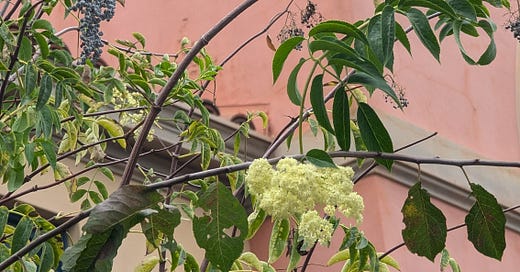


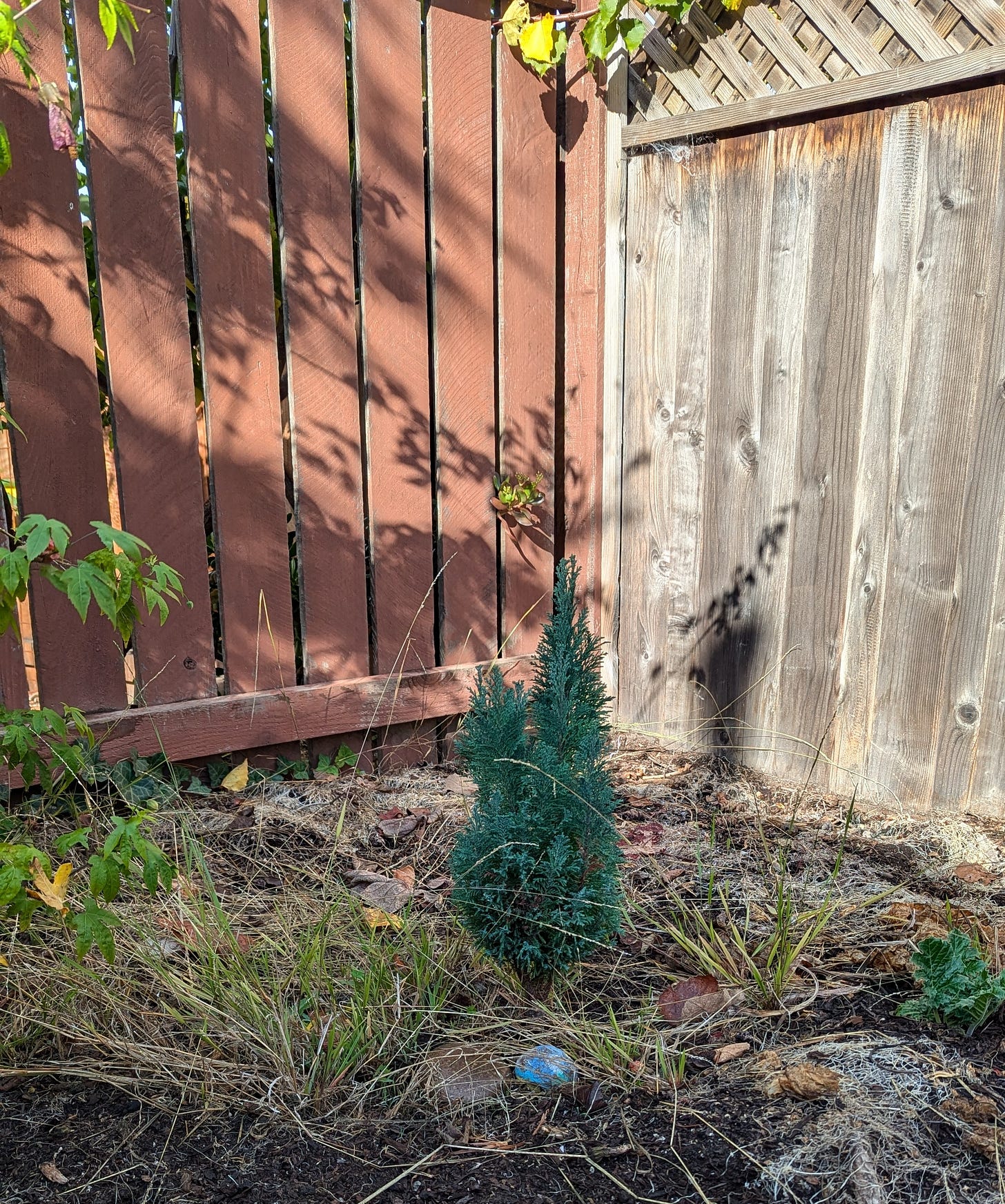

Lovely! Although I’m no expert, my thought about the competition/cooperation relationships do occur in tandem, as you posited. In my ideal world, I’d like to think that all of the relationships in forests are geared toward the benefit of the community as a whole.
This is so wonderful! The idea of pocket forests popping up is delightful. It has been a dream of mine to take over the sloping grass banks along roads and in parks - planting them with wildflowers and native grasses. So hope you take some “before” photos of your adopted median and give us all some tips!